With his geometric renditions of a forested landscape, Ottawa-based artist Gavin Lynch creates a visual world that allows the viewer to experience a mythic landscape of western North America.
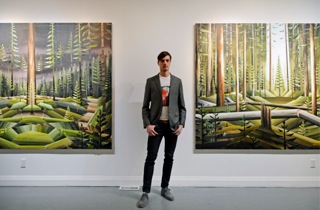 Gavin Lynch. Courtesy of Angell Gallery
Gavin Lynch. Courtesy of Angell Gallery
Lynch’s solo exhibition at Angell Gallery, For Janus, brings forward associations of past and present. Noted for being the two-faced god who transverses temporalities, Janus is representative of the movement through time, a journey we experience in Lynch’s paintings. With what I will call an ‘abstract reality,’ Lynch’s paintings use symmetry and a collage effect to create visions of the Yellowhead Pass forcing the viewer to negotiate their position in time.
 Installation view. Courtesy of Angell Gallery
Installation view. Courtesy of Angell Gallery
Looking at the two large paintings, “The Rise (Super Symmetry)” and “Passage #2 (Broken Symmetry)”, on the long wall of Angell’s west gallery, it is almost as if the viewer is placed in between the two events, behind them “The Rise” and ahead “Passage”. The nighttime scene’s outward symmetry is in the viewers past, standing at the moment of dusk, the viewer continues their journey toward the light in “Passage #2”. This traversal of time constructs a narrative for guests, almost as if the viewer is working their way through the dense Canadian wilderness. Lynch’s real-life experiences reflect this journey, “During my research trip I went through the same mountain pass twice – once headed east, the next time headed west, a symmetrical journey or palindrome experience of sorts.”
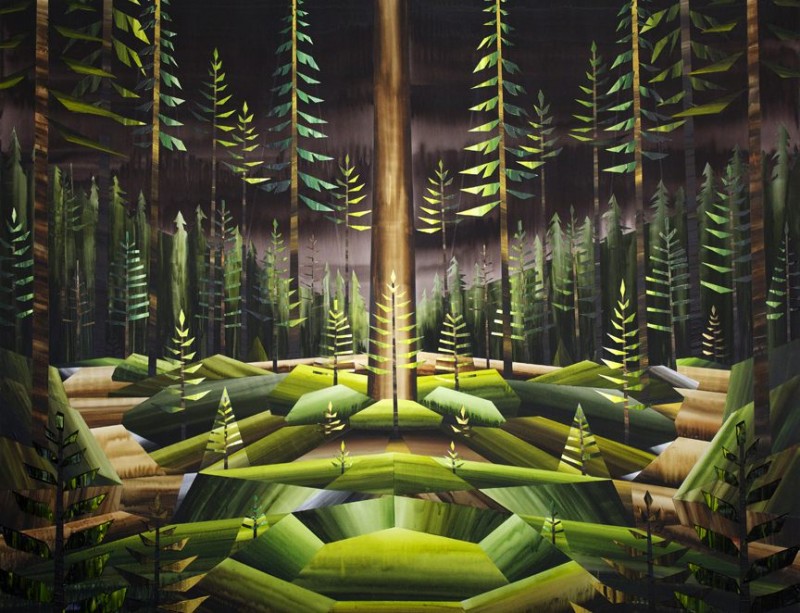 Gavin Lynch, “The Rise (Super Symmetry0″, 2015, oil and acrylic on canvas, 72″ x 96”. Courtesy of Angell Gallery
Gavin Lynch, “The Rise (Super Symmetry0″, 2015, oil and acrylic on canvas, 72″ x 96”. Courtesy of Angell Gallery
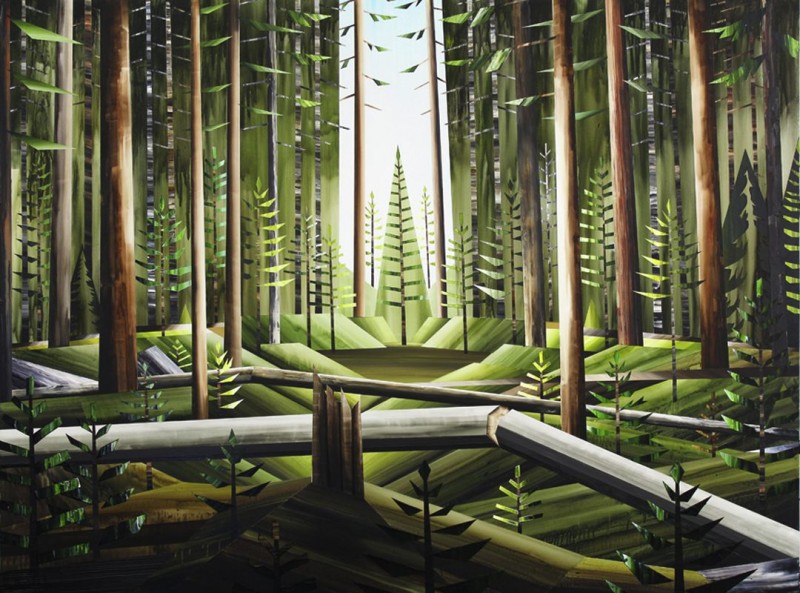 Gavin Lynch, “Passage #2 (Broken Symmetry)”, 2015, oil and acrylic on canvas, 72″ x 96″. Courtesy of Angell Gallery
Gavin Lynch, “Passage #2 (Broken Symmetry)”, 2015, oil and acrylic on canvas, 72″ x 96″. Courtesy of Angell Gallery
A striking aspect of Lynch’s painting is the collage-like effect. Lynch described this technique as not only a useful methodological tool, but also a challenging way to give the paintings an “internal reality,” it is “the sum of the parts [which create] a believable whole.” His particular technique leaves behind a compendium of textures, shapes, and lines that form together to create an incredibly detailed scene. Almost tactile, it is this aspect that provides Lynch’s works with a sense of depth, one that vehemently projects a sense of ‘place’ for the viewer.
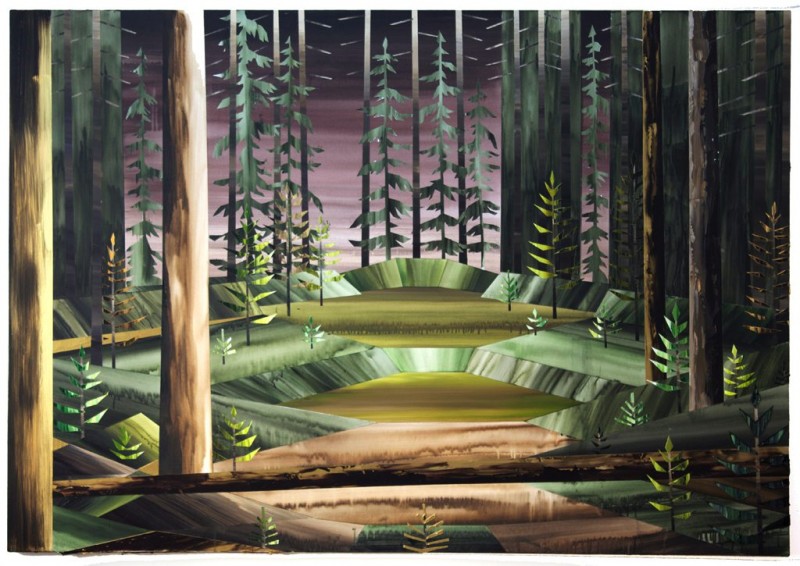 Gavin Lynch, “For Janus #2″, acrylic on canvas, 50 ¼” x 72″. Courtesy of Angell Gallery
Gavin Lynch, “For Janus #2″, acrylic on canvas, 50 ¼” x 72″. Courtesy of Angell Gallery
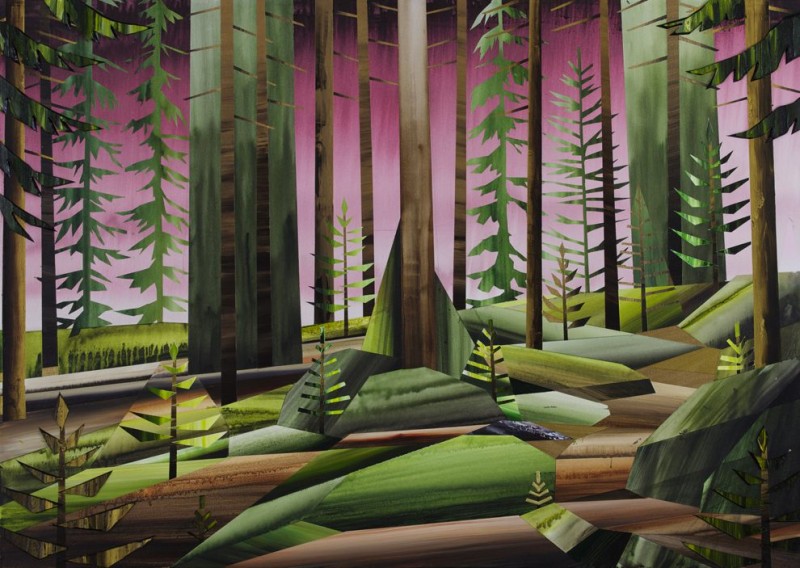 Gavin Lynch, “The Path Beneath Peyto #2″, acrylic on canvas, 35″ x 50”. Courtesy of Angell Gallery
Gavin Lynch, “The Path Beneath Peyto #2″, acrylic on canvas, 35″ x 50”. Courtesy of Angell Gallery
It is evident that Lynch’s works look back to his trips travelling the Rockies, and that memory serves the natural world’s transcription onto canvas. While perfectly symmetrical views most likely won’t be found in the mountains, it seems to be the artist’s desire to project the natural beauty of the scene into his works. I would argue that the symmetry Lynch uses does this, providing viewers with an idealistic example of nature, a place to get lost, and a place to move forward.
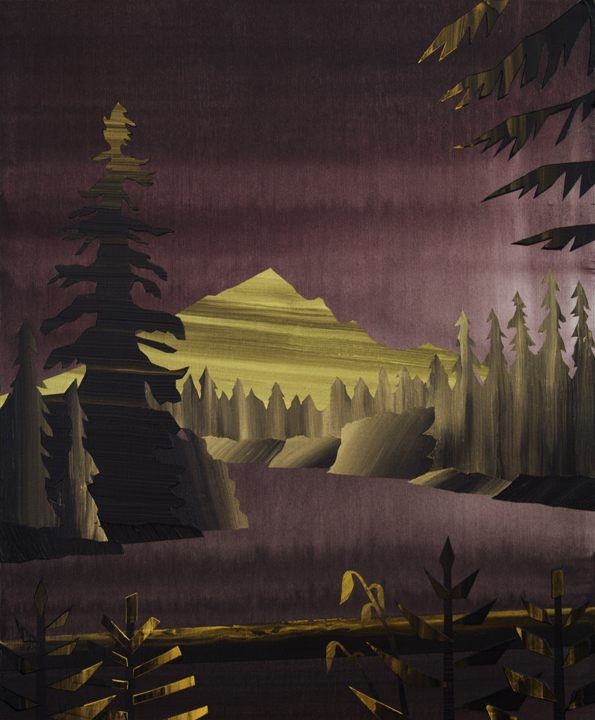 Gavin Lynch, “Twillight on the Fraser”, 2015, oil and acrylic on canvas, 22″ x 16″. Courtesy of Angell Gallery
Gavin Lynch, “Twillight on the Fraser”, 2015, oil and acrylic on canvas, 22″ x 16″. Courtesy of Angell Gallery
I asked Lynch what it meant for him to have this solo exhibition here, “Toronto is of course kind of the epicenter of Canadian art, a place where many of the painters I’ve looked up to over the years live and work,” and with regards to Angell, “to have a show in this context is really humbling and energizing at the same time; it’s a real honor to be involved with Jamie Angell and his team.”
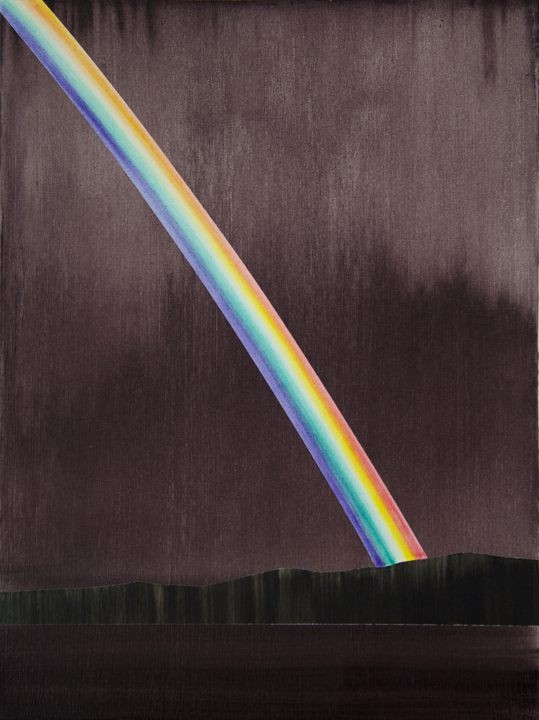 Gavin Lynch, “Gatekeeper #2″, 2015, oil and acrylic on canvas, 20″ x 15”. Courtesy of Angell Gallery
Gavin Lynch, “Gatekeeper #2″, 2015, oil and acrylic on canvas, 20″ x 15”. Courtesy of Angell Gallery
I saw some of Lynch’s paintings before and I was excited to see more of his work. But for me and for Lynch too, the favorites are “Gatekeeper #1″ and “2”. Both much simpler than the complex forest pieces, the images, reflections of one another, a single rainbow reaches from the sky to the mountains below. I would argue that it is their simplicity, which allows them to succeed; intended to be “thematic bookends” to the exhibition they create a dialogue intertwined with interpretations of temporal existence.
Brinae Bain
*Exhibition information: February 14 – March 21, 2015, Angell Gallery, 12 Ossington Avenue, Toronto. Gallery hours: Wed – Sat, 12 – 5 p.m.
